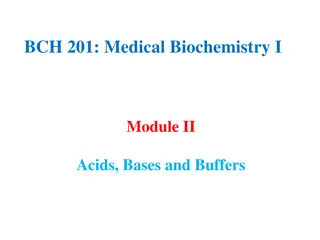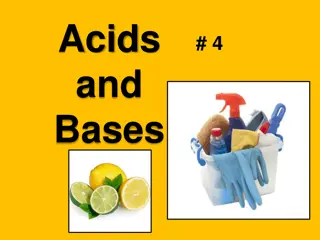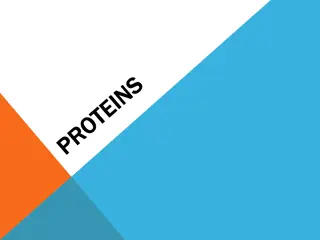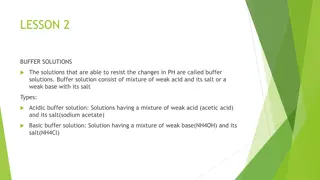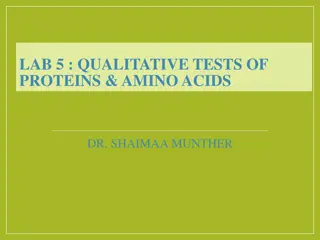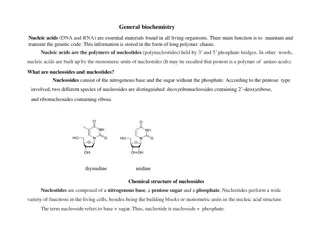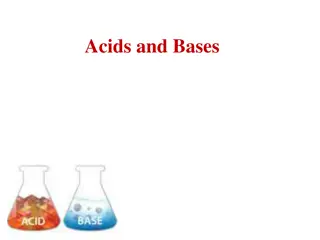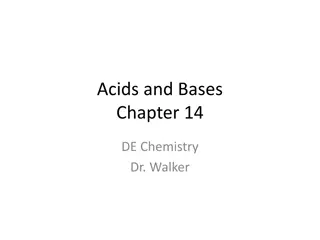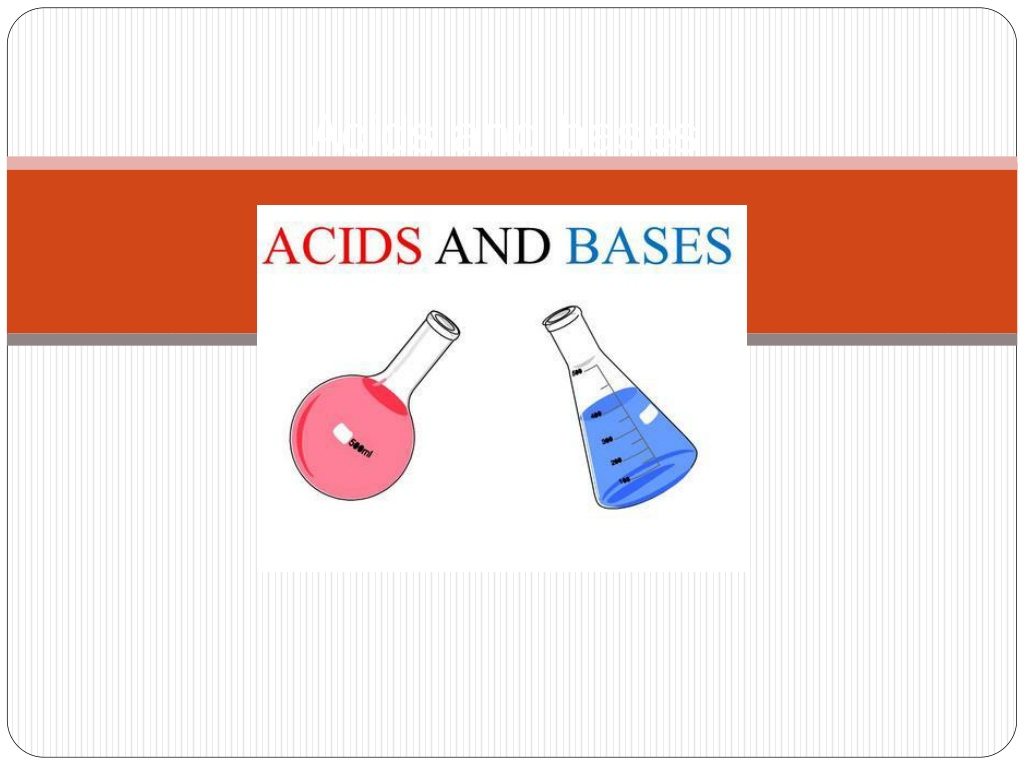
Understanding Acids and Bases in Chemistry
Explore the properties of acids and bases, including definitions, examples, strengths, and roles in biological systems. Learn about equilibrium constants, ionization reactions, pH scale, and more in this comprehensive guide.
Download Presentation

Please find below an Image/Link to download the presentation.
The content on the website is provided AS IS for your information and personal use only. It may not be sold, licensed, or shared on other websites without obtaining consent from the author. If you encounter any issues during the download, it is possible that the publisher has removed the file from their server.
You are allowed to download the files provided on this website for personal or commercial use, subject to the condition that they are used lawfully. All files are the property of their respective owners.
The content on the website is provided AS IS for your information and personal use only. It may not be sold, licensed, or shared on other websites without obtaining consent from the author.
E N D
Presentation Transcript
Acids and bases Acid: It is defined as a substance that donate a proton (it is a proton donor). Base: it is a substance that accept a proton (it is proton acceptor). - Acid: a) strong acid b) weak acid
Strong acid: It is completely ionized in the solution. example: HCl , H2SO4 Strong base: It is completely ionized in the solution. example: NaOH, KOH Weak acids and weak bases are not completely ionized when dissolved in water. - Example of weak acid: acetic acid (CH3COOH) - Example of weak base: ammonia (NH3)
-Weak acids and bases are common in biological systems and play important roles in metabolism and its regulation. Conjugate acid base pair: It is consist of a proton donor and its corresponding proton acceptor. Example: (CH3COOH/CH3COO-) CH3COOH H++ CH3COO- Acetic acid (CH3COOH) is a proton donor Acetate anion (CH3COO-) is the corresponding proton acceptor.
-Each acid has a characteristic tendency to lose its proton in an aqueous solution. -The stronger the acid, the greater the tendency to lose its proton. -The tendency of any acid HA to lose a proton and form the conjugate base A-is defined by the equilibrium constant K for the reversible reaction HA H+ + A- Which is [H+] [A-] K = [HA] https://www.youtube.com/watch?v=vxAmLPtrQDI
-Equilibrium constants for ionization reactions are more usually called ionization or dissociation constants. - The dissociation constants for acid often designated K a PK : 1 PK = log = - log K K - The symbol P denotes negative logarithm of in both PH and PK . (The more strongly dissociated the acid, the lower its PK .
PH: - The H+ concentration of a solution is usually indicated in PH units on a PH scale that runs from 0 to 14. PH: It is the negative logarithm of the hydrogen ion concentration of an aqueous solution. PH = -log [H+] 1 - This can also expressed as PH = log [H+] where [H+] is molar H+concentration.
- Pure water has a H+concentration of 10-7molar and thus has a PH of 7 neutral A solution with a higher H+concentration has a lower PH value, and one with a lower H+concentration has a higher PH value. Example: A strong acid with a high H+concentration of 10-2molar has a PH of 2, whereas a solution with only 10-10 molar H+ has a PH of 10. - - Acidic solutions have a PH of less than 7 - Basic (alkaline) solutions have a PH more than 7
Buffers Buffer: is a chemical system that tends to resist large changes in PH upon the addition of small amounts of H+ or OH-ions. -Common buffer mixtures contain two substances, a conjugate acid and a conjugate base.
Types of buffer a) acidic buffer: b) a basic buffer: -contains a weak acid and a salt - contains a weak base and a salt of the weak acid (conjugate base). of the weak base (conjugate acid). -Together the two species (conjugate acid plus conjugate base) resist large changes in PH by partially absorbing additions of [H+] or [OH-] ions to the system.
If H+ ions are added to the buffered solution, they react partially with the conjugate base present to form the conjugate acid. Thus some H+ ions are taken out of circulation . If OH-ions are added to the buffered solution, they react partially with the conjugate acid present to form water and the conjugate base. Thus, some OH-are taken out of circulation. example of acidic buffer: (CH3COOH/CH3COO-) (H2CO3/ HCO3-)
Example: How can this acidic buffer (H2CO3/ HCO3-) resist change in PH. H+ HCO3- H2CO3 OH- H2CO3 HCO3-
-The buffer working range is determined by the PKa of the conjugate acid. -The best buffering region is one PH unit on either side of the PKa value PH = PKa 1
Titration curve: It is a plot of PH against the amount of NaOH added. -A measured volume of the acid is titrated with a base solution, usually sodium hydroxide (NaOH) of known concentration. - The NaOH is added in small increments until the acid is consumed (neutralized).
Example: Titration curve of acetic acid

